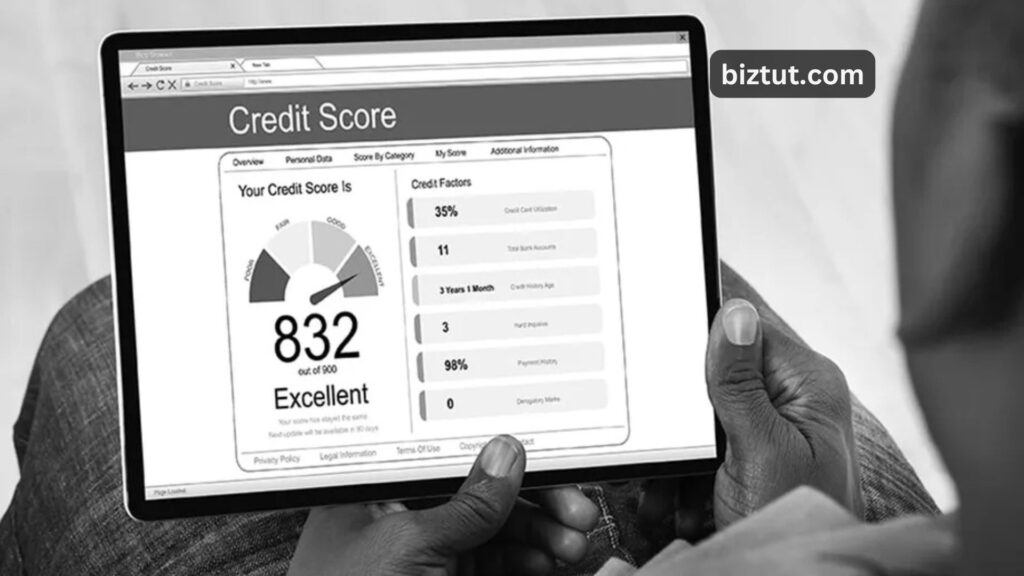Your business credit score can really make a difference in achieving your goals. A strong score can open up many opportunities for you, while a weak score can hold you back financially and logistically.
The good news is that your credit score isn’t set in stone. Just like your personal credit score, there are ways to improve it. Whether you’re starting to build business credit for the first time or trying to boost your score after some tough times, there are plenty of steps you can take to enhance your score and set your business up for success. But first, let’s go over the basics of business credit.
Business Credit 101
A business credit score is a number that shows how trustworthy your company is when it comes to borrowing money. This score mainly comes from your business’s history of debts and payments, giving lenders a good idea of how reliable you are with paying back loans on time.

Unlike personal credit scores, which range from 300 to 800 (with 700 or higher being good), business credit scores go from 0 to 100. A higher score means you’re seen as a lower risk to lenders. Generally, scores between 50 and 79 are seen as moderate risk, while scores of 80 or above are considered low risk.
Why is Business Credit Important?
Having strong business credit is really important for your company’s success. Lenders, vendors, landlords, and credit card companies all look at your business credit score when deciding if they want to work with you. If your score is good, you’re not only more likely to get approved for loans or favorable trade agreements, but you can also score better terms.
For business financing, good terms might mean lower interest rates, longer repayment periods, larger loan amounts, and higher credit limits. When it comes to vendor agreements, a better score could help you get discounts on orders or longer payment terms. Plus, a solid business credit score can give you an advantage when negotiating insurance premiums or lease terms with landlords.
Conversely, having a low company credit score makes it more difficult to get funding and other chances, such as a fantastic office location. Even if you do get approved for financing, you might face higher interest rates or stricter repayment terms.
What is your Business Credit Score based on?
Your business credit score depends on several factors, including:

- Outstanding balances: How much you owe on your accounts.
- Payment history: Your history of timely payment installments.
- Credit utilization ratio: The proportion of your credit that you are now using.
- Trade experiences: Your history with suppliers and lenders.
- Years in business: How long your business has been running.
- Business size: The scale and reach of your operation.
All these elements come together to give a complete picture of your creditworthiness.
Does Personal Credit Matter as a Business Owner?
Absolutely, your personal credit score matters as a business owner! Some lenders consider both your personal and business credit scores equally when deciding whether to lend you money. Others focus only on your business’s creditworthiness. However, if you’re a sole proprietor or just starting to build your business credit, your personal credit score will have a bigger impact on lending decisions. So, it’s important to keep an eye on both!
How to Improve Your Business Credit Score?

Improving your business credit score takes time, patience, and consistency. While you won’t see changes overnight, following some simple habits can help you reach your goals.
Step 1: Update Your Credit Information
Your business credit score is influenced by information from three major credit bureaus: Dun & Bradstreet, Equifax, and Experian. Not every lender or supplier reports to all three, so it’s important to keep your information accurate across all of them. Here’s how to get started:
- Check for Accuracy: Mistakes in your file can lower your score. Visit each bureau’s website and review your business’s information. If you spot any errors in your payment history or outstanding balances, report them right away.
- Upload Financial Documents: Showing improvements in your finances can boost your score. If you have old records in your file, upload your latest balance sheet, profit and loss statement, and cash flow statement to keep your finances current.
- Add Trade References: Positive experiences with your vendors can help improve your score. If you always pay your suppliers on time, ask them to give you a trade reference on the credit bureaus’ websites. If they’re too busy, you can still list them as a reference, and the bureau will follow up if needed.
Step 2: Streamline Your Bill Payments
One of the easiest strategies to raise your credit score is to make sure you pay your payments on time. If you have a history of late or missed payments, it’s time to improve your payment process.
Start by looking at your cash flow and how you handle invoices and payments. Ask yourself these questions:
- Do you use manual systems or software?
- Who manages the payments?
- What challenges do you face?
Finding the answers will help you identify what to change. You might need to upgrade your accounting software, set up automatic payments for utility bills, or create a better process for approving invoices so they move through faster.

Step 3: Use Credit Wisely
Using credit responsibly can help boost your credit score over time. If you’re managing your current business credit well, think about applying for a new business credit card or line of credit. Just make sure that the lenders report to one of the major commercial credit bureaus.
Here are some tips for smart spending and payment:
- Use your new card or line of credit for specific purchases, like restocking inventory or paying utility bills. This makes it easier to track your spending.
- Set calendar alerts for regular payments.
- Keep your credit utilization ratio low (we’ll talk about that next!).
Step 4: Keep a Low Credit Utilization Ratio
The amount of credit you use in relation to the overall amount of credit you have available is known as your credit usage ratio. Keeping this ratio low can improve your score because it shows you’re not overusing credit.
Generally speaking, you should aim to maintain your credit use below 30%. For example, if your total credit limit is $30,000, aim to keep your balance below $9,000.

The following strategies can help you keep your credit utilization ratio low:
- Pay Off Your Balance: Try to pay off your balance completely each month instead of just making the minimum payment.
- Increase Your Credit Limit: Ask your credit card company for a higher limit. If your available credit goes up and you keep your spending the same, your ratio will drop.
- Create a Payment Plan: Find a payment strategy that works for you, like making a payment every time you check your balance or designating a specific day each week for payments.
Also Read: How to Apply for Business Loan?
Step 5: Think About Consolidating Debt
Consolidating your debt—taking out a new loan to pay off several smaller loans—can potentially improve your credit score, but it’s not always guaranteed. In fact, it might even give your score a temporary boost. It’s a good idea to talk to your business accountant about your options before making any decisions.
Here are a few situations where consolidating your debt could help:
- Lower Credit Utilization: If you use a new loan to pay off credit card debt, your utilization ratio will drop.
- Timely Payments: A solid payment history will help improve your score over time.
- Better Debt Management: If consolidating makes it easier for you to keep track of payments, that peace of mind might lead to better score in the long run.
By following these steps, you can steadily improve your business credit score and set yourself up for success!














Wielojęzyczna Strona
May 11, 2025 at 9:31 amWhat you’ve done here is more than simply write; you’ve crafted an experience. Every idea is presented in a way that feels not just intelligent, but alive, as though each sentence has a pulse. This is the kind of writing that invites the reader to not just understand, but to feel.